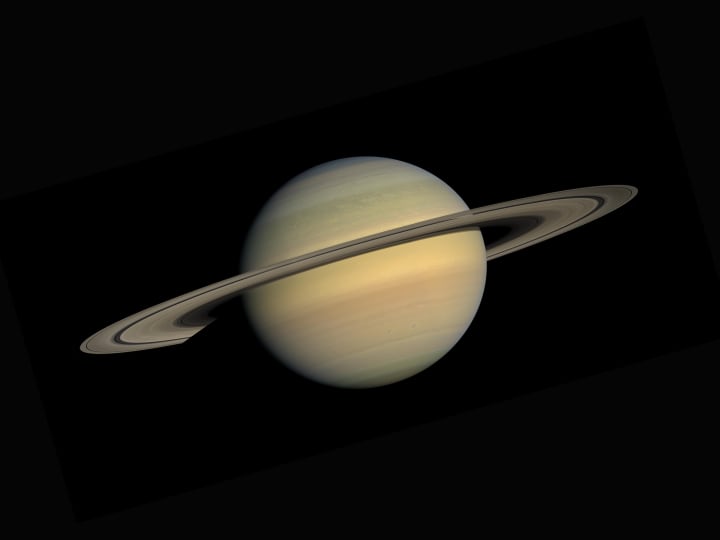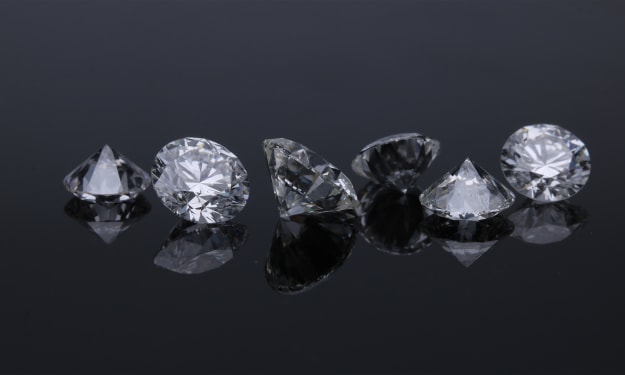
The transformation of graphite into diamonds within the interiors of Jupiter and Saturn represents a compelling manifestation of high-pressure carbon phase transitions in extreme planetary environments. The gas giants, Jupiter and Saturn, characterized by their predominantly hydrogen and helium atmospheres, harbor cores with extraordinary pressures on the order of millions of times Earth's atmospheric pressure. This immense pressure, coupled with elevated temperatures resulting from gravitational compression and primordial heat release, engenders conditions conducive to profound alterations in carbon allotropes.
Graphite and diamonds, both allotropes of carbon, undergo a metamorphic journey in response to the formidable pressures experienced within the gas giants. Graphite, with its layered hexagonal carbon lattice, is a stable form under terrestrial conditions. However, the escalating pressures encountered within the planetary interiors prompt a transition, referred to as the carbon phase transition. This process involves the rupture of carbon-carbon bonds in the hexagonal planes of graphite, leading to a restructuring of carbon atoms into the tetrahedral lattice characteristic of diamonds.

The carbon phase transition is intricately linked to the extreme pressures prevailing in the planetary cores. The energetic constraints imposed by these pressures necessitate a reconfiguration of carbon bonding, resulting in the emergence of diamond-like structures. Temperature, an additional determinant in this dynamic interplay, contributes to the kinetic aspects of the process. The elevated temperatures within the gas giants provide the requisite energy for carbon atoms to facilitate not only bond dissociation but also their subsequent reorganization into the crystalline lattice arrangement emblematic of diamonds.
The pressure at the core of Jupiter is estimated to be several million times Earth's atmospheric pressure, and Saturn's core pressure is similarly immense. As you move deeper into the planets, the pressure increases significantly. At these extreme pressures, carbon atoms undergo the phase transition. On Earth, graphite and diamonds are different forms of carbon, and under extreme pressure, graphite can transform into diamond. In the deep interiors of gas giants, the high pressure causes carbon atoms to rearrange themselves into a crystalline structure characteristic of diamonds. The carbon-carbon bonds in graphite, which is a stable form of carbon at lower pressures, break and rearrange into the strong, tetrahedral structure of diamonds. The immense pressure and temperature conditions lead to significant changes in the molecular structure of carbon. These changes are fundamental to the formation of diamonds in the interior of gas giants.

Contrary to conventional terrestrial diamonds, the diamonds envisaged within the gas giants are anticipated to exhibit distinct characteristics. The diminutive size of these extraterrestrial diamonds, likely in the nanometer range, distinguishes them from their Earthly counterparts. Moreover, the compositional features of these diamonds may deviate from the pure carbon structure typical of terrestrial diamonds, owing to the unique conditions governing their formation, possibly containing impurities or having unique characteristics due to the extreme conditions of their formation.

The observational challenges intrinsic to gas giant interiors, characterized by the absence of solid surfaces and obscured by dense atmospheres, necessitate reliance on theoretical models and laboratory experiments. Computational simulations replicating high-pressure conditions and analogs of carbon phase transitions on Earth provide essential insights into the transformative processes transpiring within Jupiter and Saturn.

The metamorphosis of graphite into diamonds within the gas giants is an intricate interplay of extreme pressures and temperatures, underpinned by the carbon phase transition. This phenomenon unveils the malleability of carbon under exotic conditions and underscores the broader implications for our understanding of planetary interiors. As celestial laboratories, gas giants and their enigmatic diamonds serve as conduits for unraveling the complex interplay of fundamental molecular processes amid the cosmic expanse. The study of exoplanets, which are planets orbiting stars outside our solar system, also contributes to our understanding of planetary interiors. Similar processes may occur in exoplanets with conditions resembling those of gas giants in our solar system.






Comments
Algieba is not accepting comments at the moment
Want to show your support? Send them a one-off tip.